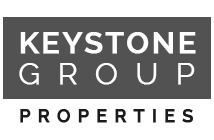Personal Finance: Is a Mortgage Refinance Right for You?
For information about coastal and luxury Los Angeles real estate, Orange County CA homes, and San Diego homes in La Jolla and Mission Beach, call Bob Cumming of Keystone Group Properties at 310-496-8122. Keystone Group Properties services discriminating buyers and sellers of Southern California homes— Beverly Hills, Malibu, and Santa Monica to Newport Beach, San Juan Capistrano to La Jolla,.
Personal Finance: Is a Mortgage Refinance Right for You?
By Claudia Buck
They’re knocking on the lender’s door. As mortgage rates have tumbled to all-time lows, demand for refinancing has fired up homeowners nationwide.
And it’s not just those drowning in underwater mortgages. With rates for 30-year mortgages hovering below 4 percent since last October, all kinds of homeowners are trying to get their monthly mortgages reduced, say lenders and mortgage experts.
“It’s huge. It’s buried our staff and every other lender in town,” said O.J. Vallejo, mortgage consultant with First Priority Financial in Sacramento, who said his three-person staff has been working six days a week the last four months.
Nationally, refinance volume “has been running at a three-year high in recent weeks, as mortgage rates remained extremely low,” Mike Fratantoni, vice president of research for the Washington, D.C.-based National Mortgage Bankers Association, said in an email. “With refinances, the No. 1 driver is interest rates.”
Along with months of record-breaking low interest rates, other factors are driving the refinancing boom: a competitive lending market and changes in some federal refinancing programs for struggling homeowners.
It’s prompted many established homeowners with old-school, high-interest mortgages to decide it’s time to refi.
Neil and Louise Mueller, longtime Land Park residents, were encouraged by their financial planner to look into refinancing their mortgage last spring.
“It was almost too easy,” said Louise, an American River College counselor, who said the process, including a home appraisal, took about three weeks.
The result: Their 30-year, fixed-rate mortgage dropped from 5.12 percent to 3.87 percent, which lowered their monthly payment by about $100. They also pulled out about $11,000 for savings and for a family cruise overseas with their two adult children.
Why refi?
Generally the primary reasons for refinancing a mortgage are to:
- Lower monthly mortgage payments.
- Eliminate the unpredictability of an adjustable-rate mortgage by switching to a fixed rate.
- Free up home equity cash for home improvements, college costs or other expenses.
- Shorten the loan term, say from a 30- to a 15-year mortgage, which can save thousands in interest payments.
Saving money is usually the biggest incentive.
Calling the low rates “historic,” John Winters, a wealth adviser with Morgan Stanley Smith Barney in Sacramento, said he recently advised all his clients to consider a refi. Especially for those “finding it difficult to live with” the anemic returns on low-interest CDs and bonds, freeing up monthly income by refinancing can make sense, he said.
Should you refi?
It’s a personal calculation that varies. Generally, you look at how long you plan to be in your current home and whether the upfront costs outweigh the monthly savings.
“If you’re not going to be in your home another one or two years, you’re not going to recoup the closing costs,” said Greg McBride, senior financial analyst with Bankrate.com.
“Everybody’s situation is different,” said mortgage consultant Vallejo. “There’s no right or wrong answer. The only answer is what works for your family.”
Some couples who refinance are looking ahead to retirement.
“Paying off the mortgage is now back in vogue,” Vallejo said, especially for those in their late 40s or 50s, who want to be mortgage-free at retirement age.
That doesn’t necessarily mean they’ll lower their monthly payment by refinancing. For example, a couple with a $250,000, 30-year loan at 5.25 percent three years ago would have been paying about $1,380 a month. If they refinanced their current balance to a 20-year, 3.5 percent loan today, their payments would increase slightly, to $1,405.
“Their payment goes up $25, but they just took seven years off their mortgage,” said Vallejo. “That’s almost $116,000 in interest. That’s huge.”
On the other hand, younger homeowners with kids might choose a 30-year mortgage when they refinance because they need the lower monthly cash flow to save for college or pay off debt. Or those with adjustable mortgages due to reset to higher rates may want to lock in single-digit rates.
What you’ll pay
The mortgage rate you’ll be offered depends on numerous factors, including: your credit score, loan amount, loan-to-value ratio (how much you owe compared to the home’s appraised value), length of your loan term and type of home (rates on condos, rentals and vacation homes are typically higher.)
Lots of mortgage ads promise “no-cost” loans. According to some lenders, that’s a misnomer.
“It really means ‘no cash out of pocket,’ ” said Vallejo. “There’s no free lunch; somebody is paying for it.”
Typically, in a no-cost loan, all closing costs and pre-paid items (such as appraisal fees and credit checks) are paid by the lender and built into the interest rate.
Shop around
It pays to compare quotes from several lenders because they offer different rates and fees. Start with your current lender or sit down with a local loan originator. You can also do refinance comparisons online, using mortgage calculators at sites like Bankrate.com or those of individual banks and lenders.
If you’re a struggling homeowner, ask your lender about changes in the federal Home Affordable Refinance Program and FHA refinance programs that have made refinancing options more plentiful.
Bankrate.com’s McBride said the refinance market is particularly “compelling” in California, where home prices have bottomed out and there are lots of competitive lenders.
But don’t focus solely on interest rates, said McBride. When comparing refinance quotes, look at appraisal fees, title searches and closing costs. And be sure you’re comparing the same loan terms, not a 15- and a 30-year, for instance.
Good standing
Be sure the lender is in good standing.
Tom Pool, spokesman for the state Department of Real Estate, said state and federal licensing standards for mortgage originators are much stricter than they used to be, which “has weeded out most of the bad actors.”
Nevertheless, you can check a company’s or individual’s licensing status at the state Department of Corporations (www.corp.ca.gov) or the Department of Real Estate (www.dre.ca.gov).
Pool also recommends online searches at sites like the Better Business Bureau (necal.bbb.org) to see if the lender has been linked to bad practices or scams.
Too late?
Even though interest rates have inched upward in the last month, you’re probably not too late.
“It’s not worth losing any sleep over,” said Bankrate’s McBride. “Given the European debt crisis, (interest rates) can’t rise appreciably.”
On the other hand, the national mortgage bankers group predicts mortgage interest rates will “drift slowly higher” next year, leading to significant declines in refinance activity.
Above all, make sure a refinance is right for your situation.
“It’s a significant financial transaction,” said Edward Achtner, an Oakland-based regional sales executive for Bank of America. “If buying a home is the largest transaction a consumer embarks upon, a refinance is a close second. Do the research, evaluate the different options. Take your time and do not be pressured into making any decisions
Santa Monica CA luxury real estate for sale


